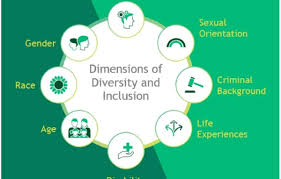Introduction
In today’s digital age, technology continues to reshape the landscape of marketing, offering innovative ways for brands to engage with consumers. One such technology that has gained significant traction in recent years is virtual reality (VR). This article explores the role of virtual reality in marketing, highlighting its potential to revolutionize how brands connect with their audience.
Understanding Virtual Reality
Virtual reality refers to a simulated experience that can be similar to or completely different from the real world. Through the use of VR headsets or immersive displays, users are transported to virtual environments where they can interact with digital elements in a realistic way. While VR technology initially gained popularity in the gaming industry, its applications have expanded to various fields, including education, healthcare, and, notably, marketing.
The Evolution of Marketing
Marketing has evolved significantly over the years, moving away from traditional methods such as print ads and TV commercials towards more interactive and digital strategies. With the rise of the internet and social media, brands have increasingly turned to digital marketing channels to reach and engage with their target audience.
Virtual Reality in Marketing
Virtual reality has emerged as a powerful tool for marketers looking to create immersive brand experiences and connect with consumers on a deeper level. By leveraging VR technology, brands can transport users to virtual environments where they can experience products and services in a way that was previously impossible through traditional media.
Benefits of Virtual Reality Marketing
The adoption of virtual reality in marketing offers several benefits for brands and consumers alike. One of the primary advantages is the ability to provide highly immersive and interactive experiences that capture users’ attention and imagination. Additionally, VR marketing campaigns have been shown to enhance customer engagement, leading to increased brand awareness and memorability.
Implementing Virtual Reality Campaigns
When implementing virtual reality campaigns, brands must consider their target audience and design experiences that resonate with their interests and preferences. Whether it’s a virtual product demonstration, a simulated event, or an immersive storytelling experience, the key is to create content that captivates users and encourages them to engage with the brand.
Case Studies and Examples
Numerous brands have successfully leveraged virtual reality in their marketing campaigns to great effect. From immersive virtual tours of real estate properties to interactive product demos in virtual showrooms, these examples showcase the versatility and impact of VR in marketing.
Challenges and Considerations
While virtual reality holds immense potential for marketing, it also presents challenges and considerations that brands must navigate. These include the cost of developing VR experiences, accessibility issues for users without VR hardware, and technical limitations that may impact the overall user experience.
Future Trends in VR Marketing
Looking ahead, the future of virtual reality in marketing appears promising, with continued advancements in technology driving innovation and growth. From more affordable VR hardware to improved content creation tools, the landscape of VR marketing is poised for further expansion and evolution in the years to come.
Conclusion
In conclusion, virtual reality represents a transformative force in marketing, offering brands a unique opportunity to create immersive and memorable experiences for their audience. By embracing VR technology and exploring creative ways to leverage it in their campaigns, brands can differentiate themselves in a crowded marketplace and forge deeper connections with consumers.

